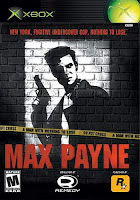
There is nothing in video games I take more seriously than
The Legend of Zelda franchise: a total of nine
Zelda games are featured in my top 100 games list; my personal favorite is a
Zelda game (
A Link to the Past); the best game ever made is a
Zelda game (
Ocarina of Time).
In the December 2009 issue of Nintendo Power (NP), the NP staff collaborated on an article titled "Ultimate Zelda," in which they rank the thirteen
Zelda games (excluding
Ocarina of Time Master Quest and
A Link to the Past/Four Swords) from worst to best and name a number of series' superlatives. This blog entry is a refutation of that article.
What follows are the NP rankings:
Best
Zelda games:
13)
Zelda II: The Adventure of Link12)
The Legend of Zelda: Four Swords Adventures11)
The Legend of Zelda: Majora's Mask10/9)
The Legend of Zelda: Oracle of Ages/Oracle of Seasons8)
The Legend of Zelda: The Minish Cap7)
The Legend of Zelda: Phantom Hourglass6)
The Legend of Zelda: The Wind Waker5)
The Legend of Zelda: Link's Awakening/DX4)
The Legend of Zelda: Twilight Princess3)
The Legend of Zelda2)
The Legend of Zelda: A Link to the Past1)
The Legend of Zelda: Ocarina of TimeThis list is wrong. It's certainly not the worst
Zelda list I've read, but it has some serious problems. Most notable is number 11.
Majora's Mask is one of the finest entries in the
Zelda franchise, one which improves on the graphics and play control of its immediate predecessor on the Nintendo 64,
Ocarina of Time. NP explains its low ranking of
Majora's Mask by describing it as "a different kind of
Zelda quest that polarizes fans." The editors at NP of course refer to its unique 72-hour storyline, where players must make as much progress as possible in 3 game days before using a magical ocarina to return to dawn of the first day and start the cycle again. Far from being a detriment, this 72-hour cycle makes
Majora's Mask one of the most unique and enjoyable games in the franchise, as well as one which requires a good deal of time management and strategy.

Similarly low on the list is
The Wind Waker, although its ranking isn't nearly as criminal as that of
Majora's Mask. NP echoed the complaints of some fans by calling sailing in
The Wind Waker "incredibly tedious." I, for one, love sailing in
The Wind Waker.
Zelda games have always been about immersing the player in the game world; sailing across a vast ocean, traveling from island to island, goes a long way in absorbing the player.
The previous two games are too low on the list; the next game is too high. The first handheld
Zelda game,
Link's Awakening is a legitimately great game. Its spot on the list, however, is all wrong. There's nothing particularly faulty in
Link's Awakening, but it's shorter and less innovative than many other
Zelda games, including another superior handheld title ranked below it,
The Minish Cap.
What follows is my list:
13)
The Legend of Zelda: Four Swords Adventures12)
Zelda II: The Adventure of Link11/10)
The Legend of Zelda: Oracle of Ages/Oracle of Seasons9)
The Legend of Zelda: Phantom Hourglass8)
The Legend of Zelda: Link's Awakening/DX7)
The Legend of Zelda: The Minish Cap6)
The Legend of Zelda: Twilight Princess5)
The Legend of Zelda4)
The Legend of Zelda: The Wind Waker3)
The Legend of Zelda: Majora's Mask2)
The Legend of Zelda: A Link to the Past1)
The Legend of Zelda: Ocarina of TimeThe NP article also lists several superlatives:
Best hook: Light World/Dark World (
A Link to the Past)
Best weapon: Bow (all games)
Best item: Double Clawshots (
Twilight Princess)
Best Princess Zelda: (
The Wind Waker)
Best boss: Twilit Dragon Argorok (
Twilight Princess)
Best overworld: (
The Minish Cap)
Best story moment: Beneath the Waves (
The Wind Waker)
Best tune: "Overworld Theme" (
The Legend of Zelda)
Best secret: Second Quest (
The Legend of Zelda)
Best dungeon: Goron Mines (
Twilight Princess)
Best enemy: Octorok
Best supporting character: Midna (
Twilight Princess)
Best Ganon: (
Ocarina of Time)
I have problems with several of the abovementioned superlatives; I'm especially surprised with so many coming from
Twilight Princess, the most recent console
Zelda game. The worst entries are BEST BOSS and BEST DUNGEON. Like many climactic battles in
Twilight Princess, the encounter with the dragon Argorok is a very creative boss fight, but it's surpassed by fights in
The Wind Waker,
Ocarina of Time and
The Minish Cap. Worse yet is NP's choice for BEST DUNGEON: Goron Mines. This is just plain inexplicable. The final two dungeons in
The Wind Waker are far better, as is Great Bay Temple (
Majora's Mask) and half a dozen dungeons from
Ocarina of Time. One superlative which I was surprised to agree with is BEST OVERWORLD;
The Minish Cap has an overworld packed with secrets and side-quests, many of which are accessible only by shrinking down to microscopic size.

My superlatives (unchanged entries are in bold):
Best hook: 72-hour cycle (
Majora's Mask)
Best weapon: Biggoron's Sword (
Ocarina of Time)
Best item: Hookshot (
A Link to the Past)
Best Princess Zelda: (
Ocarina of Time)
Best boss: Twinrova (
Ocarina of Time)
Best overworld: (The Minish Cap)Best story moment: Beneath the Waves (The Wind Waker)Best tune: "Overworld Theme" (The Legend of Zelda)Best secret: Second Quest (The Legend of Zelda)Best dungeon: Water Temple (
Ocarina of Time)
Best enemy: Stalfos
Best supporting character: Ezlo (
The Minish Cap)
Best Ganon: (Ocarina of Time)The great thing about the
Zelda franchise is that it touches players in very personalized ways. Everyone has their favorite game, perhaps corresponding to their first experience in the
Zelda universe. Comments, as always, are welcome below. What would your list look like? What's your personal favorite?
 Game: Castlevania
Game: Castlevania

















.jpg)












